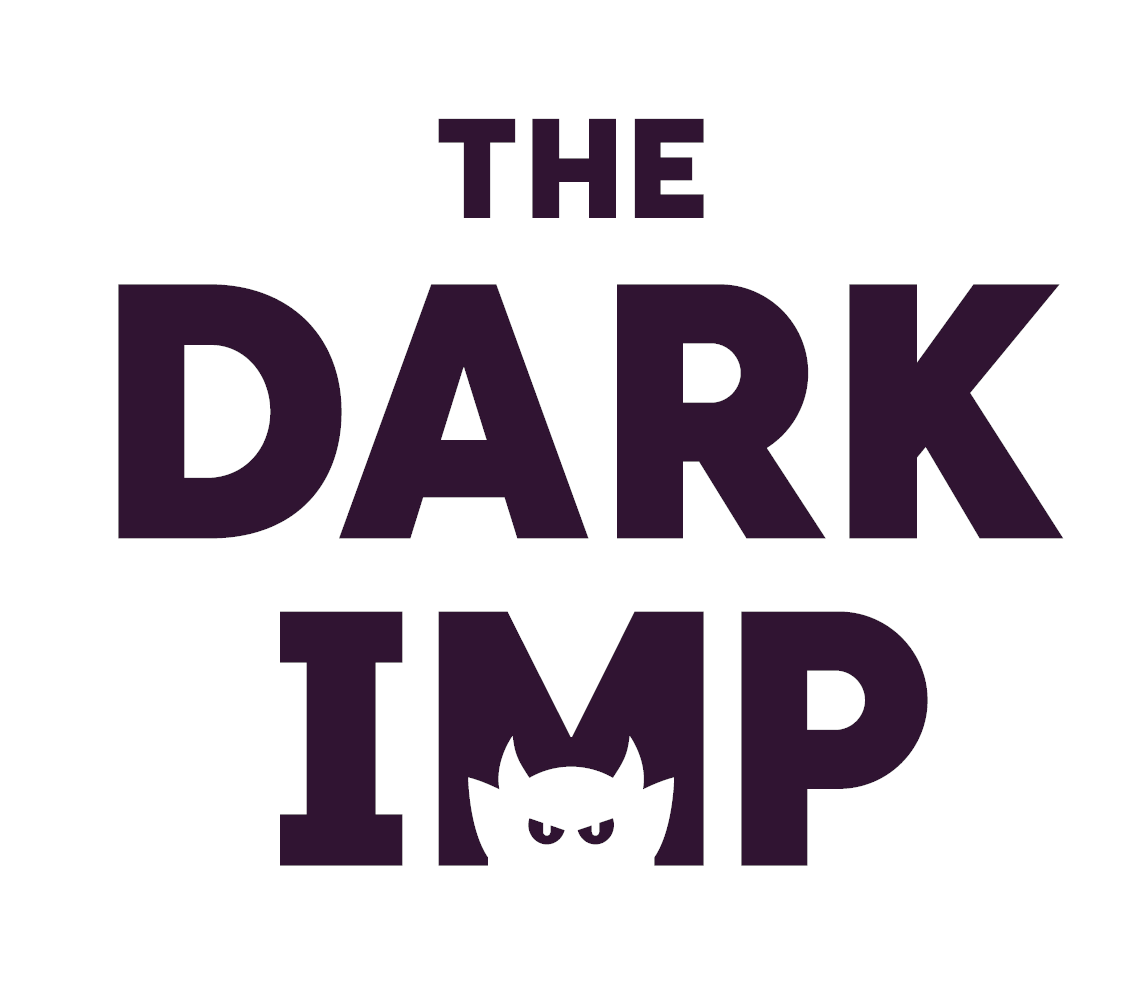The Dark Imp is a British board game developer and publisher, headed up by Ellie Dix. After backing the Cracker Games Kickstarter last year, and watching Ellie on a few live streams, it opened my eyes to some of the games-making talent right under our noses. After a conversation earlier this year, Ellie said she was going to send me some games to try. What I didn’t expect was a HUGE box arriving on my doorstep, with nearly everything they make!
The Dark Imp has a goal. They want to help parents reclaim family time, getting kids’ attention away from screens, and playing physical games around a table, together. It’s an ideal I hold close to my own heart, as the dad to an eight-year-old who would do nothing but play and watch Pokémon and Minecraft if I let him. So, over the course of a few weeks, we all sat down together and played through the games.
Some of the games are lighter, only taking a few minutes to play, with simple rules. Some of them are much more like the sort of thing I’d normally be buying for myself, so I’m going to give you an idea of the games we played, what we thought of them, and the sort of ages each would fit best with. With that preamble out of the way, let’s get onto the games. It’s a lengthy post, as there’s a lot to cover, so here’s a handy little index to jump to whatever you want to read.
Beach Life + Castaway (placemat games)
Coaster Games
For whatever reason, my son immediately grabbed these out of the box. Something about the size and shape appealed, so before I’d even unpacked the rest of the games, we got started. All you need are some pens and some paper. The rules are on one side of the coaster, the game on the other side. A couple of the games were a bit too complicated for him, but we had three in particular that were big hits.
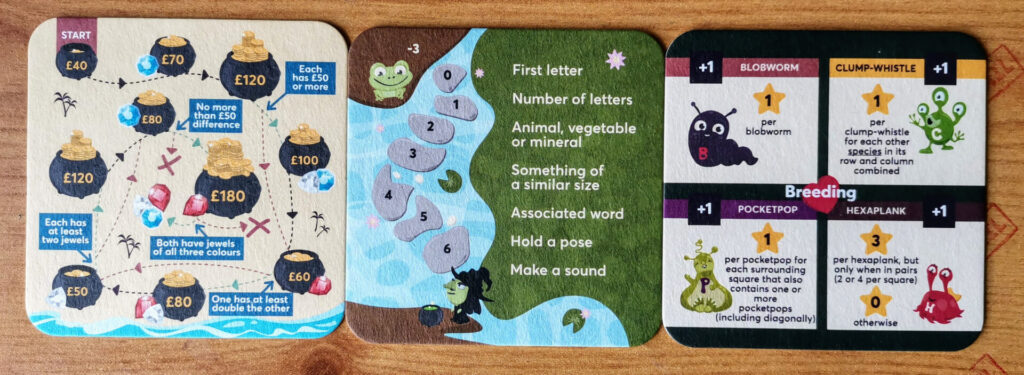
Alien Farm is a game of doodling aliens in a grid, taking turns to decide what you can place next. Points are awarded for certain placement rules. While I just added initials for the aliens, mini-me had to draw every single alien, and loved it.
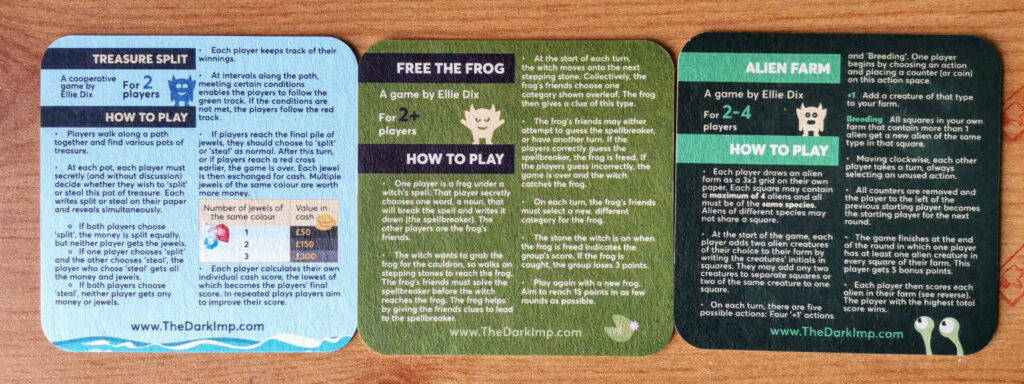
Free The Frog is a cutesy thing where one player (the frog) thinks of a thing, then the others choose categories of clues to try to guess the word. It’s a nice, light work game that we had fun with.
Treasure Split is a game where each step of the way along the path each player secretly decides whether to split the money you find, or keep it for themselves. If everyone splits, they get a share. If one persons keeps it, they keep it alone. However, if more than one person tries to steal the lot, no-one wins. I liked the way the Prisoner’s Dilemma has been turned into a game, but no-one was interested in listening to me explaining the theory!
Beach Life + Castaway (placemat games)
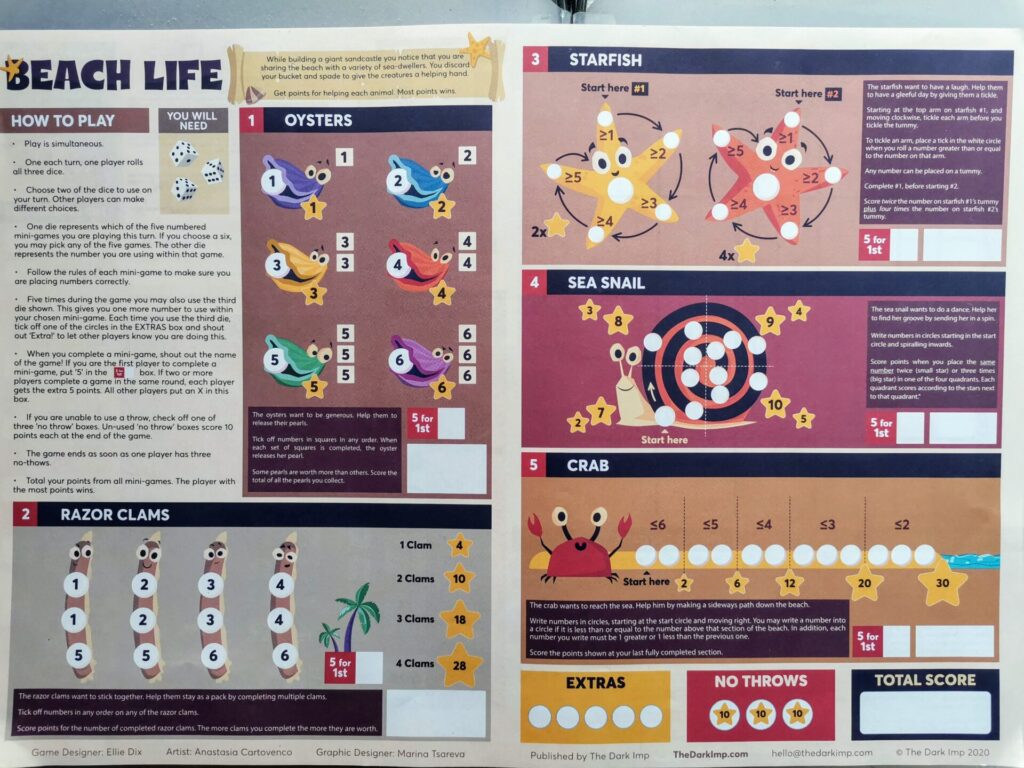
These games make up opposite sides of a big A3 sheet, and that gave me a nice bit of leverage: “Shall we play this? It’s pretty big, so turn the TV off, we’ll go set it up on the kltchen table”. Beach life is what you’d get if you took Ganz Schon Clever and gave it a theme. It’s got a nice seaside feel, and the big boxes and clear instructions made it easy for everyone. You roll dice, use one of them to pick an area on the sheet, and the other to cross something off in that area. It’s cute and easy to explain, and everyone understood what to do within two turns.
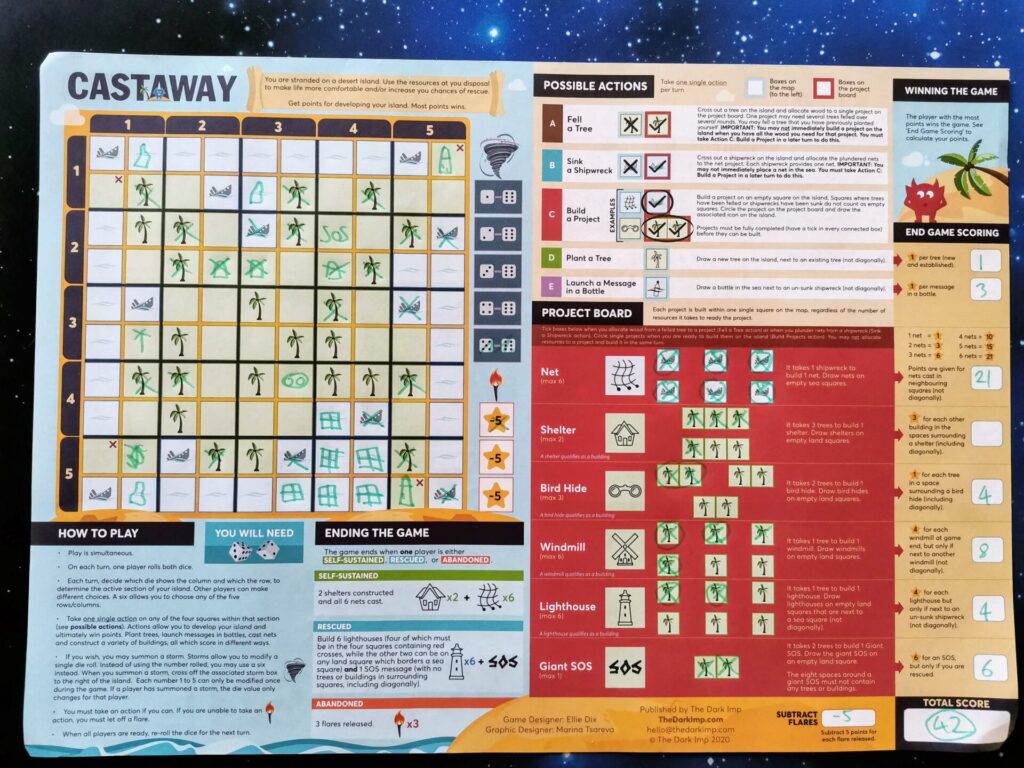
My favourite of the two is Castaway however. You’re castaways on an island which is divided up into a grid. Roll a couple of dice, use the numbers as co-ordinates, then either harvest resources or build something. You do that by crossing things out or doodling structures and items. It reminds me of a cross between Cartographers and a brilliant little web game called Tiny Islands (check it out, it’s great). The strategy and options in Castaway would work better with older kids I think, but Beach Life was a hit for all ages here.
Cracker Games
We played this one back at Christmas, and I still have a draft of the review I never got around to publishing back then. Cracker games comes in a big cardboard Christmas cracker, but instead of a terrible (I secretly love them) joke and a paper hat, it’s stuffed full of wooden pieces to play games with.
The games themselves are fully-fledged mini-games, and I was really pleased to see a lot of mechanisms included in some of my bigger box games. IMPetuous and IMPrudent – speed and matching games, respectively – were the biggest hits with my son, while I really like IMPassive, because point manipulation is always fun. Due to there only being three of us we didn’t get to play the voting or racing games, but a scan of the rules showed me I’d have enjoyed them.
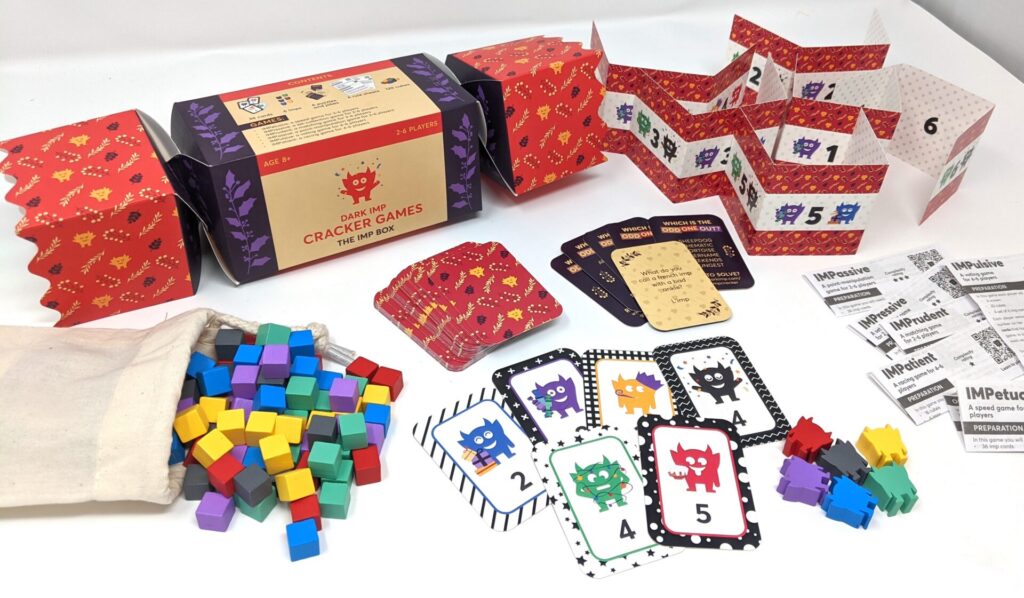
The real value for me came after we played the games. Along with the games there’s a booklet full of family game design challenges. I won’t pretend that we got through them all, as my son had a ton of new toys to play with, but what I really liked was what happened straight after our games around the dinner table. He took the cubes, imps and player screens (I told you it was proper game bits) and started making up his own games. The rules were… organic, let’s put it that way, and usually involved him ultimately winning, but that’s not the point. The seed was sown, and the spark ignited, and that’s where Cracker Games did what I hoped it would. It gave us a few of hours of good fun, and it engaged my son’s brain without the use of a screen of some kind. That in itself was worth far more than the few pounds the cracker cost me.
Don’t Count Your Chickens
When I pulled Don’t Count Your Chickens out of the box, I expected something light. It’s a game that comes in one of those little tins that you get mints or travel sweets in, and when you open it there’s a little rule book, some cards, and some cubes. The game you get to play with those bits is something you’d expect in a much bigger box.
It’s a game that’s half worker-placement, half hidden information, and it’s really good. You’re trying to collect chickens, roosters and turkeys, and collecting information which tells you how much each is worth at the end of the game. Each player has a rule in front of them, which only they know. It might say ‘Animal A will be worth two times Animal B’, or something like that. When you place your character card on an action, you might swap your rule for another, or to discover which animal Animal A is, for instance.
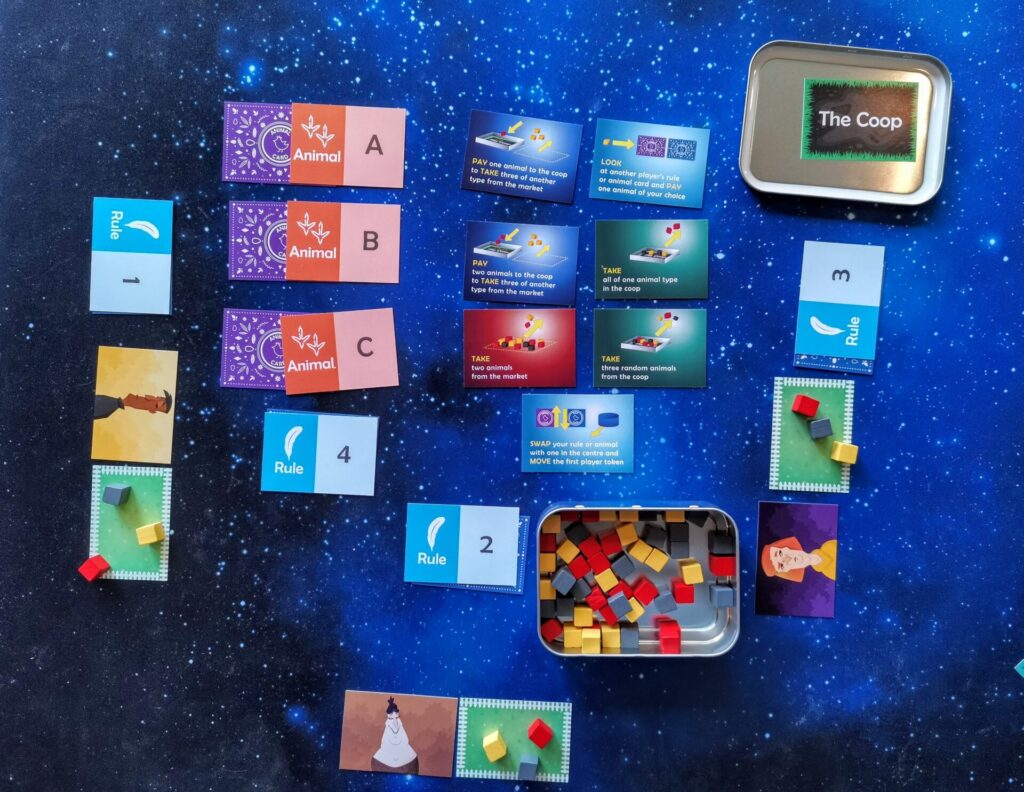
It’s a really clever little game, and although you’re perfectly entitled to make notes, I loved exercising my little grey cells and trying to remember everything. At first you’re just trying to figure out what animal is worth what, but then you’ll see someone read a rule and start collecting roosters like they’re toilet rolls in a pandemic, and you think “hmmm, roosters eh?”. But hang on, don’t go all-in on the rooster market just yet, because you might read another rule which says at the end of the game the person with the fewest gets to swap with the person with the most!
It’s a great game, and it’s probably better played with older kids and family members. My son played it, but was more interested in collecting as many yellow chickens as he could, because he likes chickens best. Don’t Count Your Chickens looks like the sort of game you’d pick up at the counter in Waterstones, but there’s much more to it. Hobby gamers will really enjoy it.
Top Cake
Top Cake is an auction game. In each round a variety of cake pieces (cards) are laid on the table. Each cake is worth different amounts, and can support a certain number of other cake pieces on top. Each player has a set of bidding cards, and place bids – face-down – for each piece. When all the bids are in, duplicates are removed, and the highest score wins the piece.

It’s a game of being cunning and bluffing, trying to second-guess your opponents. You each have Snatch and Reversal cards too. Snatch is an automatic win, while Reversal means the lowest score wins. Those are the most satisfying rounds to win, when you drop a ‘1’ card and a reversal and win a card everyone else has used their high value cards on. Impish indeed!
I love the way the artwork is implemented in the game. It’s not as abstract as just collecting some cards, each cake layer is stacked on top of the one before it, making a towering cake of cards on the table in front of you – even with a cherry on top!
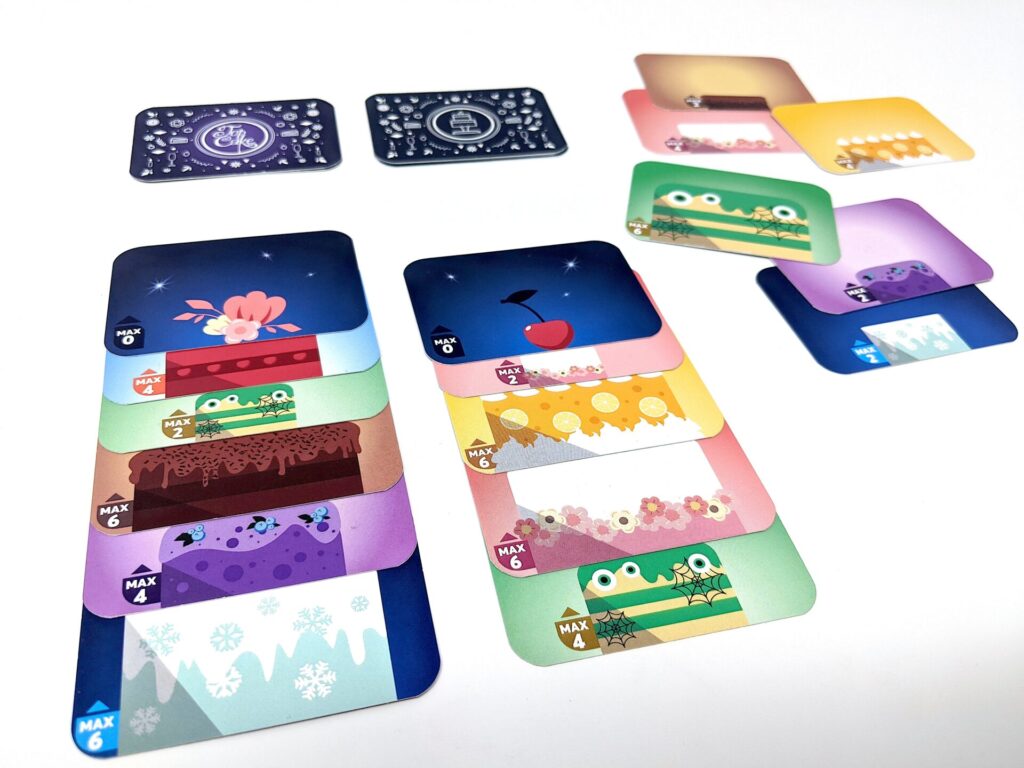
I didn’t get to play Top Cake properly, thanks mainly to lockdown. I managed to get through half a game, but my boy lost interest. It’s a shame, because what I played I really enjoyed, and I can’t wait to meet up with others and watch their surprise when they see how much is packed into the tin. Much like Don’t Count Your Chickens above, I think it’ll work great with kids even just a couple of years older. In fact, I think with a group of adults and a couple of bottles of wine on the table, it could get downright hysterical.
Doughnut Dash
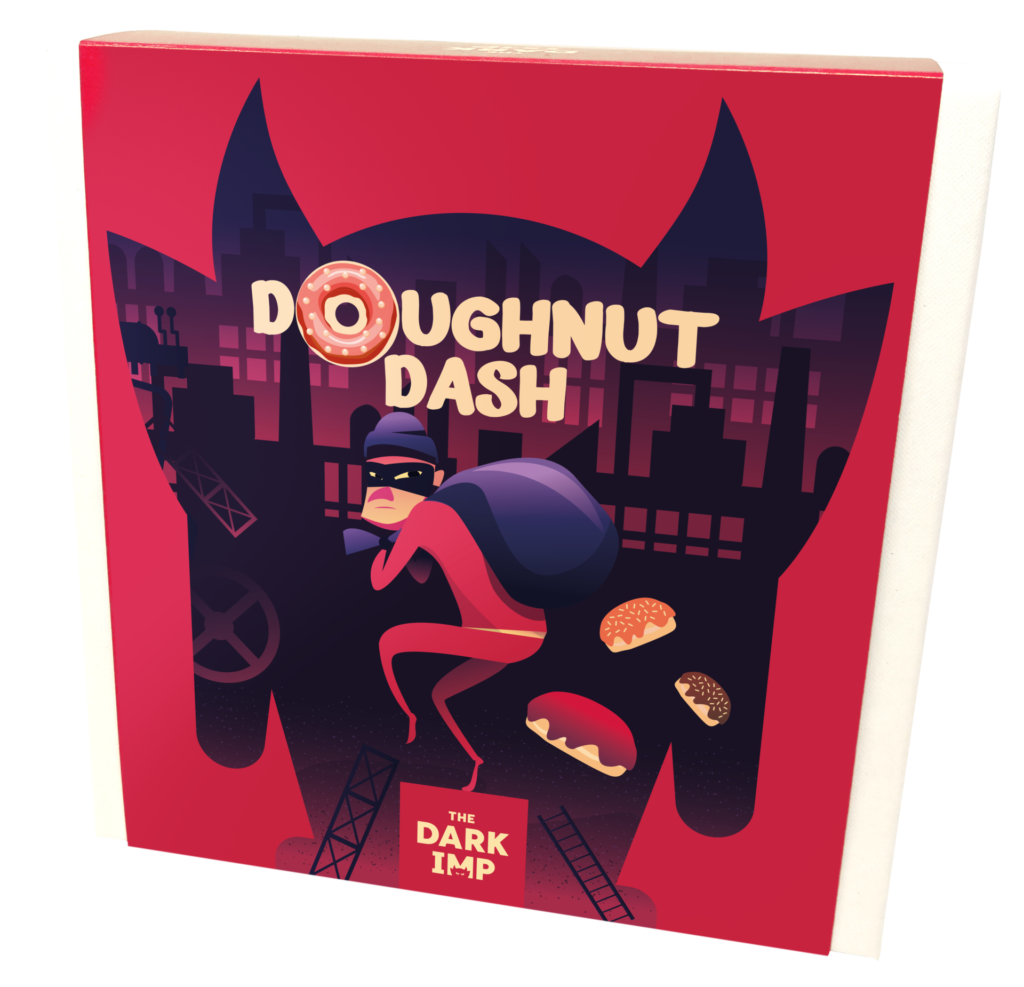
Onto the first of the two ‘big box’ games Ellie sent me. Doughnut Dash is a game where players are rival thieves, trying to steal the best doughnuts from a world-famous factory. The factory is littered with the sweet treats (and some ketchup ones too…), and on a turn you’ll each be planning movement, by playing movement cards. Movement cards, once unveiled, make your thieves walk in the direction on your played card, until they land on a doughnut or bump into a rival thief.
It’s an unusual factory, and in the tried-and-tested physics of classic arcade games like Pac-man and Asteroids, if you move off one side of the floor, you’ll appear on the opposite. Things are trickier than they seem though, as there are portals that open up, teleporting the thieves around the factory floor, and Sugar Rush cards which you can play to do things like change the direction of the card you’ve played. Oh, and I almost forgot to mention, you’re moving two thieves at once. Both of them move in the same direction, so careful planning, making compromises, and choosing least-worst options is a must.
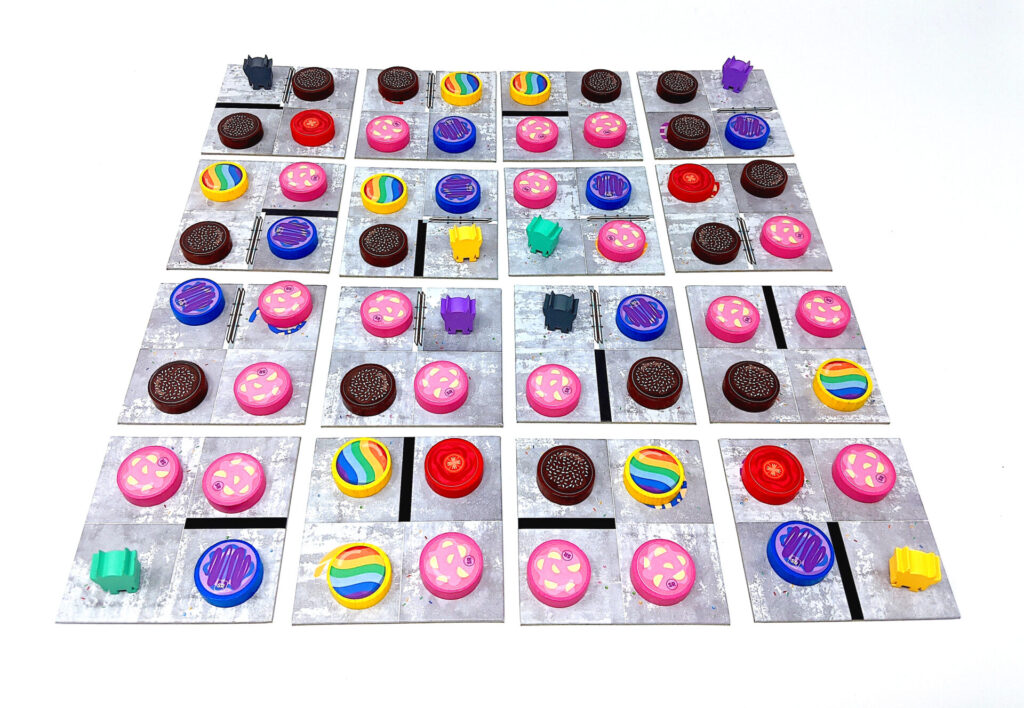
Doughnut Dash is a lot of fun. Kids will get fun from it just by moving in the obvious directions and hoovering up the colours they like best, but if you’ve ever played a programmed movement game before, like Robo Rally, you’ll really enjoy the nuances offered-up. You can often guess what other players might be doing next, based on which directions they’ve already used, and where things are in relation to them. So with some careful planning, you can predict where they’ll end up, and make sure that your movement ends on them, meaning it’s their tower of doughnuts you’re stealing from, not the board. This is especially good if you have a particularly competitive parent (cough, cough), because it means the others can gang-up and make sure they don’t build an unassailable lead.
Despite the saccharine sweet theme and colours, Doughnut Dash is anything but a ‘kids game’. True, kids will play it and enjoy it – mine loved it and demanded a second game immediately after the first. But again, and it’s something I find myself repeating in these reviews, this is a proper game, with proper mechanisms, and something that a regular game group of seasoned players will enjoy too. It’s a fantastic way of exposing families to the mechanisms and strategies that good, modern board games are built on.
Gnome Grown
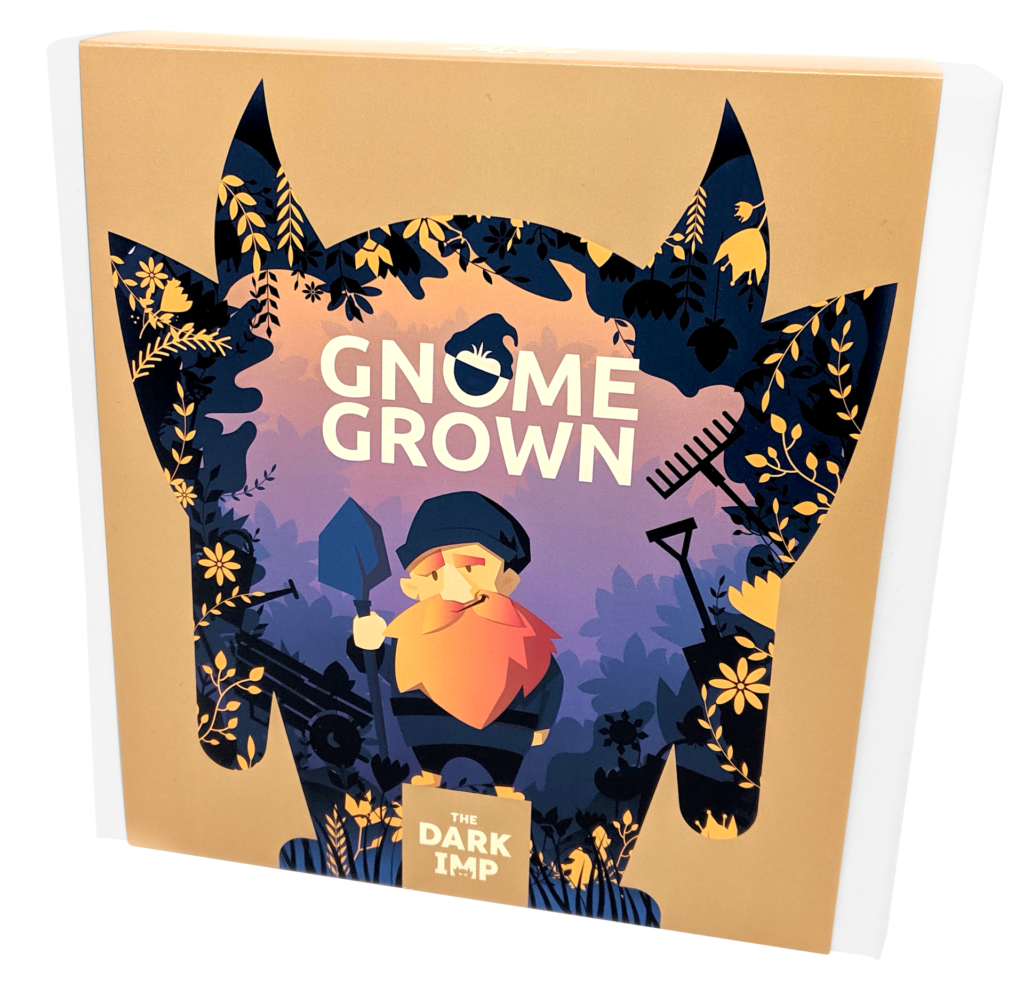
Gnome Grown is the second big box game, and it’s my favourite. It’s my favourite because it’s a worker-placement game, and anyone who knows me knows that worker-placement is easily my favourite mechanism in a board game. Along with worker placement, it’s a game of tile-placement. Now we’re into Uwe Rosenberg territory, and I love Uwe Rosenberg games.
The setting of Gnome Grown sees the players competing to make the nicest gardens in their neighbouring plots. Players have objective cards with icons which will score them points if they manage to meet certain criteria, like ‘Have an owl, a fountain and some flowers in one section of your garden board’. To get those tiles, you need to put your markers on the action board, and this is the worker-placement part of the game. It’s great, there are loads of choices and lots of ways to either further your plans, or start playing catch-up if you feel like you’re lagging behind.
After planning actions, everyone takes their actions, buying up tiles and following the placement rules to add them to their plots. This is the tile-laying and polyomino-style placements come in. The shapes are simpler than in more complex games, which is good, given the intended audience of first-time gamers.

Like the other Dark Imp games, there’s plenty of interaction between players in Gnome Grown. One of my favourite things is the turn order bidding. In each round players have a tile which has a number on it, and shows in which order they’ll claim and take actions. At the end of the round, players take bid a hidden number of ladybirds, and all reveal at the same time. The highest total is the first player for the next round, and so on.
The twist comes in that you can also add your player order token to the total. So the player in third place this round only has to add two ladybirds to make a total of five, whereas the first player would need to add five ladybirds, as four ladybirds would tie (five each) and ties are broken by highest numbered turn order tile. That mechanism is really neat, I’m a big fan, it keeps the playing field level.

The theme might be more cutesy than my usual choice of dry, geographic Euro, but make no mistake, Gnome Grown is a great game. Not a great game for a family game, or pretty good with any other conditions. It stands up on its own as a great worker placement game. It’s not heavy, it’s pretty lightweight in terms of depth of strategy, but that’s perfect for what it is. You’re not going to get many ten-year-olds – or their parents – to sit down and take on A Feast For Odin or Bonfire without them having a terrible experience and swearing off hobby board games for life.
I’ll happily play Gnome Grown with you any day of the week. It won’t break my brain or leave me with strategies whirling around my head like the lyrics to some god-awful pop song, but I’ll have fun, and more importantly, so will everyone else around the table. Plus there’s a little gnome in the box. If that hasn’t sold you, I honestly don’t know what will now.
Summary
The Dark Imp make great games, and you can tell there’s passion behind everything Ellie Dix has touched. Ellie is clearly a hobby gamer, and I can see flashes of inspiration from other games and designers all over her work. Nothing is ripped-off, and there’s plenty there that feels fresh.
What I love about the lighter stuff like the placemat and coaster games, is that all you need is a bit of space and some dice and pens. What I couldn’t escape while I played all of the games, is just how well they’d fit in with holidays. You could throw a whole load of games in a bag and take them to a cottage or caravan, or even camping, and guarantee fun. The themes can, and do, appeal to anyone and everyone.
There’s a couple of games in here where I think you really need older kids if you’re going to try to lure them away from Minecraft and Youtube, because their exposure to board games up until now may well have been limited to Monopoly or some franchise tie-in cash-cow-milking travesty of a board game. But if they try these, and like some of them, they’ll have experience of mechanisms baked into the vast majority of modern board games. Worker-placement, hand-management, movement programming, auctions, roll-and-write, hidden information, polyomino laying – they’re all here, and they’re all good examples of them
If you’re the parent of a young family, or if you know a young family and you’re a hobby gamer yourself, I’d really recommend picking up a game or two and seeing how they go. Ellie’s mission is an important one, and one I feel a connection with. Screen time is okay, but we all need to get our kids back to social interactions with their immediate family, and what better way to do it, than with board games?
Games kindly provided by The Dark Imp. Thoughts and opinions are my own.
